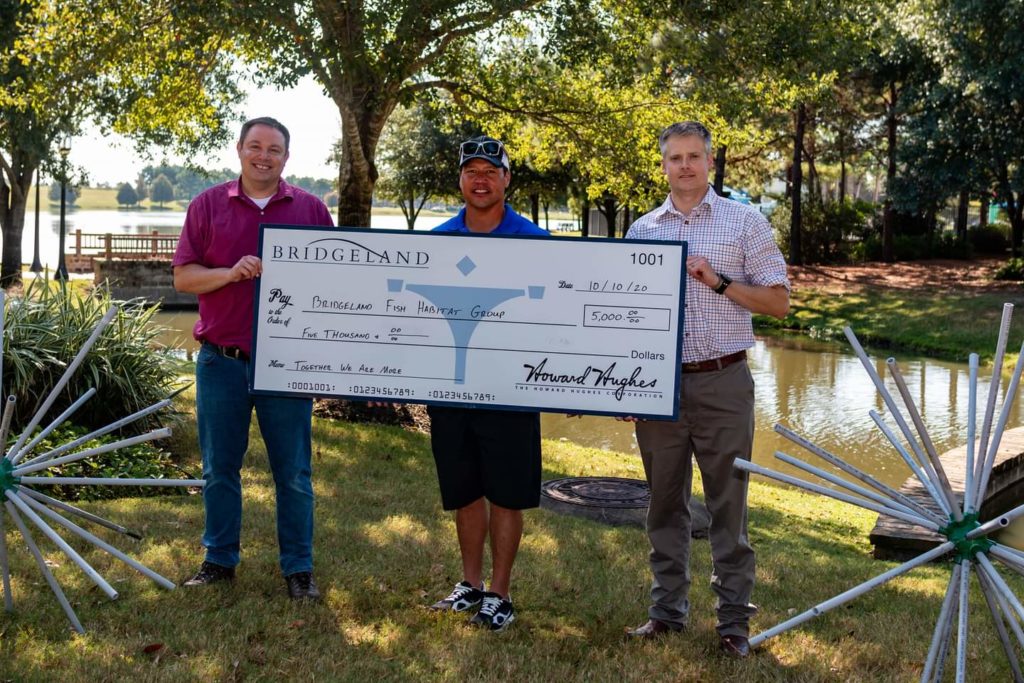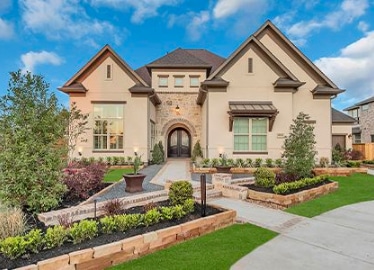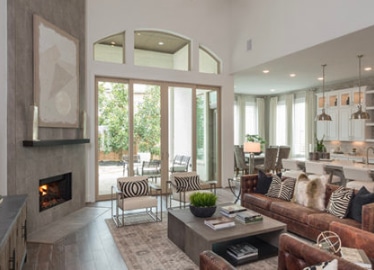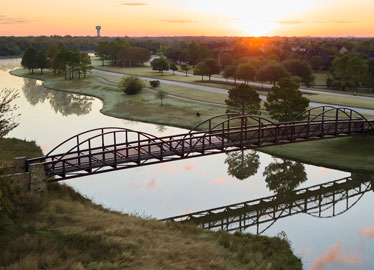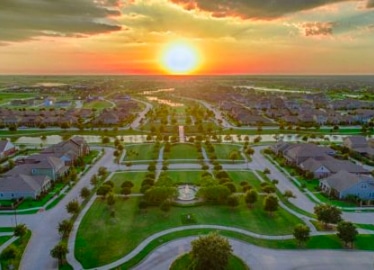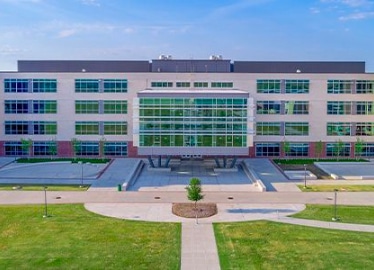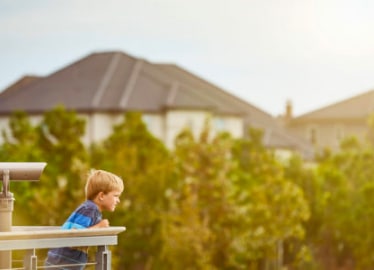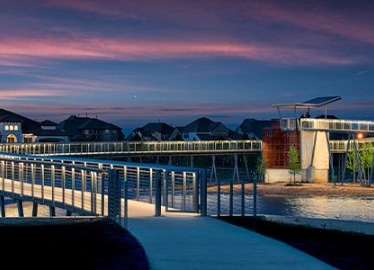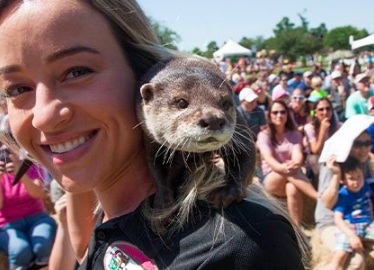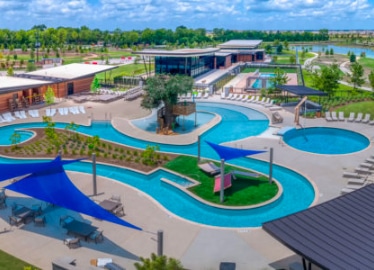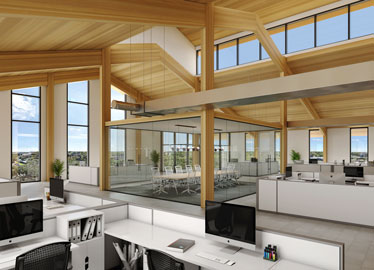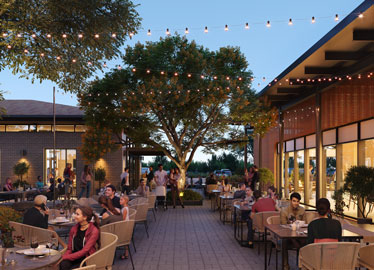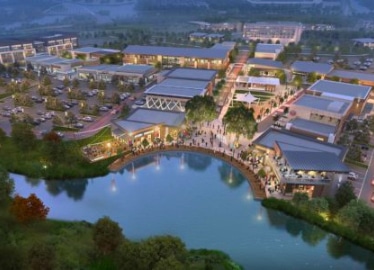Since the global pandemic reduced our ability to do many of our favorite things, fishing has become a new favorite activity for many in Bridgeland. Our lakes have been stocked for the purpose of providing residents with an opportunity for recreational catch-and-release fishing and the ability to linger outdoors.
Thanks to four residents who share a common interest in fishing, some of the lakes throughout our community will get an upgrade, of sorts, to provide fish with resources for laying eggs, sourcing food and in general, better habitats to raise their young.
Robbie Green, Erik Hiemstra, Brian Milan, and Will Price formed the Bridgeland Essential Fish Habitat /Conservation group. Using their collective expertise that includes an oceanographer and a hydrologist, the group received permission from Bridgeland’s HOA and WCID 157 to create fish habitats for long-term sustainability of fish populations in our lakes. They also received $1,000 each from the HOA, WCID 157, and Bridgeland resident Theresa Duhe Bradshaw. The Howard Hughes Corporation also gifted $1,000 per year for the next five years, promoting long-term viability for their efforts.
UNDERSTANDING THE PROBLEM
Bridgeland waterways need spawning grounds so fish can grow. Without fostering a proper habitat, their survival rate is less than 1%. When our lakes are first dug, and for the first few years, the hard clay bottom is a suitable surface for nest-building fish such as largemouth bass and bluegill. As a layer of silt builds up over time, largely due to runoff, this surface no longer supports nest building.
The first few years are a critical stage for young fish. They need protection and a food source to grow. To increase the survival rate, the group will add fish habitats and fish attractors to our lakes to create cover for fish to hide and areas to source food.
HOW DOES IT WORK?
The fish attractors, nicknamed porcupines because their protruding rods resemble quills, are made from gray conduit PVC pipe. Their color makes them less visible in water and because the surface of conduit pipe is rougher than traditional white PVC pipe, algae will more easily grow on it, providing a food source for young fish. The group will also add natural rock, like pea gravel in shallow water, providing nesting beds for several species. Using natural stones will preserve the aesthetics of the lakes if they become visible during low water periods. In deeper water, where it will not be seen, the group will arrange flagstone and bull rock, creating crevices and cover for many types of fish.
Following the recommendations from MUD 157, the group carefully chose launch sites for the fish attractors based on water depth, positions of inlets and outlets and a prescribed distance from bridges. They’ve chosen five locations on Cypress Lake, a popular fishing spot, to begin the project. The first 17 porcupines were deployed with the help of 16 volunteers last November in the waterway near Hidden Pass Rd. and Bridge Cove Dr. The group also deployed seven yards of pea gravel, 119 cinder blocks, and 5,553 pounds of flagstone. The area around the island was named after Bradshaw, for her generous donation to the project. The early spring is when fish spawn, so the group is working diligently to get several habitat fish attractors in place this winter.
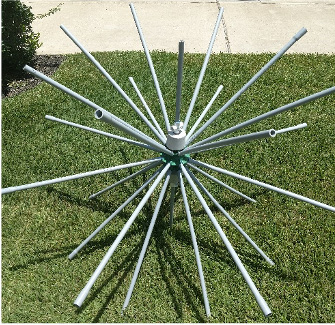
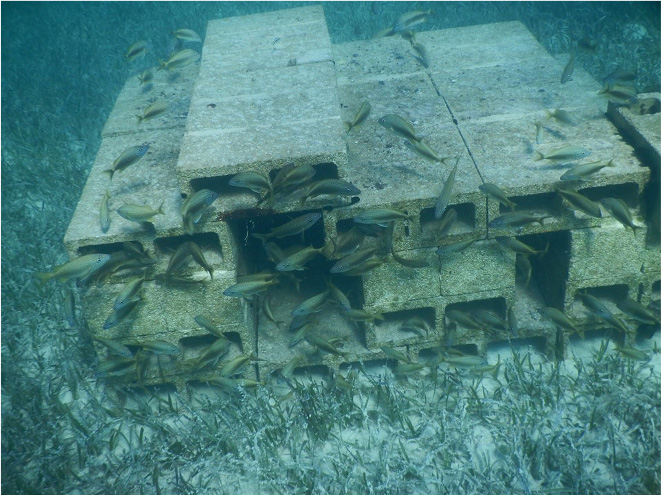
MULTIPLE BENEFITS
The Bridgeland Essential Fish Habitat/Conservation group is a resident driven organization. Its efforts are connecting like-minded people, fostering the founding principal of our development and they would like the help of as many residents as possible. Maintaining a sustainable fish population in our lakes will aid water quality and serve as a source of food for vising waterfowl, like the Pelicans that frequent our lakes this time of year. Restocking our lakes will need to be done less frequently, adding a cost savings to the project, as well.
HOW CAN I HELP?
This is a long-term project with many opportunities for residents to get involved. You can find needed materials to donate on the group’s Facebook page, make a donation to their GoFundMe, or give the gift of your time. If you own a kayak or canoe and wish to assist with transportation of materials for deployment, or for more information, please reach out to Brian Milan or Will Price.
Community groups like The Bridgeland Essential Fish Habitat/Conservation are a perfect example of how residents can connect with each other and with nature for happier lifestyles, and reflects The Howard Hughes Corporation’s vision of sustainability, resiliency and conservation. Future plans include creating a fish identification guide, a coloring book, and the addition of an underwater camera to monitor the fish for educational instruction.
